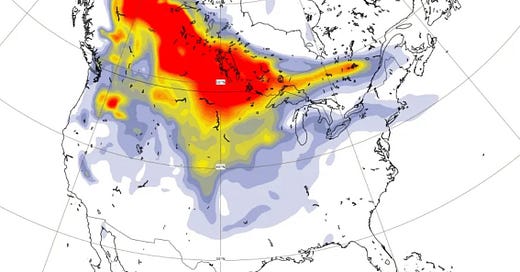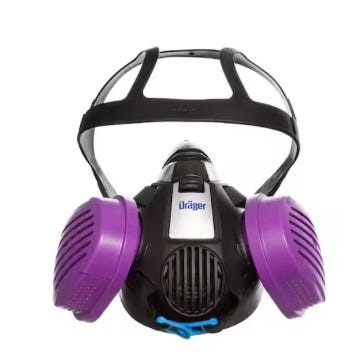Wildfire Smoke: Unsafe In Any Amount
New research reveals the health risks of breathing wildfire smoke
Tens of millions of people are being exposed to dangerous levels of wildfire smoke again this summer.
Need-to-Know: The health risks of wildfire smoke are understudied and underestimated.
Fortunately, there are some new health studies. Here are a few Need-to-Knows:
Wildfire smoke can be up to 10 times more harmful to people than other sources of smog or smokestack emissions.
Wildfire smoke contains enormous amounts of tiny PM2.5 particles, some of which are carcinogenic.
PM2.5 particles can get deep into the lungs, enter the bloodstream, and cross the blood-brain barrier.
Wildfire smoke, in addition to exacerbating asthma and COPD, increases rates of stroke, heart and kidney disease, can hasten the onset of dementia, and lead to low-weight births.
At least 52,480 Californians died prematurely as a result of their exposure to wildfire smoke between 2008 and 2018. (The results do not include the worst fire years of 2018, 2020, and 2021.)
More than $430 billion in health expenses were associated with Californians’ exposure, according to a study published last month.
Wildfire smoke causes nearly 16,000 deaths annually in the U.S. This could double by mid-century according to a new analysis.
There are over 1000 active wildfires in Canada this week, with 700 out of control. The U.S. has about 60 large fires currently. Smoke will be a health concern for weeks to come with three months left in the fire season.
Need-to-Know: Forests are burning on 4 continents
Eastern Russia is having a bad wildfire season as well with 85,000 sq km burnt already. That’s 4X more than Canada’s fires at this point.
The Amazon Rainforest is also on fire too with over 13,000 fires in the first six months of this year. Their fire season hasn’t even started.
Central Africa’s lush rainforests have also seen a big increase in fires over the past 20 years.
What’s going on?
Record-high temperatures have increased evaporation rates. On land, this means the air is less humid overall and soils dry out faster. Combine this drying with a warm spell in an area with forests and you’ve created a tinder box waiting to explode.
High temperatures also can generate more lightning and even lead to spontaneous combustion.
About spontaneous combustion: A pile of hay that is safe at cooler temperatures may become dangerous and spontaneously combust during a heatwave. High air temperature reduces the rate at which heat can dissipate from the pile, and so the heat from bacterial activity in the pile builds up until it bursts into flames.Need-to-Know: Fossil-fuel emissions have dramatically altered our climate.
We are living in new climatic conditions including big shifts in where, when, and how much rain falls. We are also getting increasingly hotter temperatures, and more powerful weather events all supercharged by climate change.
Need-to-Know: Coping with wildfire smoke isn’t easy.
A few tips:
Keep an eye on your air quality. I use IQAir maps and their app to get readings of the PM2.5 count. Lots of weather sites provide similar info and forecasts.
HEPA filters in your home can keep indoor air safer. You can even make your own for $100 or so. Here’s an 8-minute video on how to do it.
Mask up outside. A good N95 mask or better yet a proper respirator that filters 99.9 percent of particles like this one. I’ve never used this or any other respirator so can’t comment except to say I’d get one if there is smoke like we had last year where I live.
It’s tough mentally and spiritually to live day after day with smoke and those dirty yellow skies. By using a good mask and filtration I hope folks in the smoke zone can stay healthy and feel ok.
Until next time, be safe and be well.
Stephen





